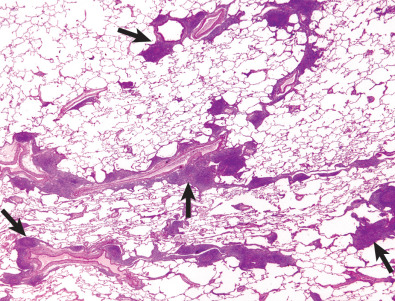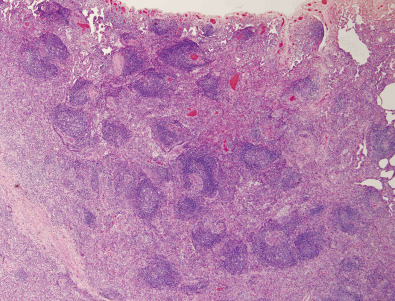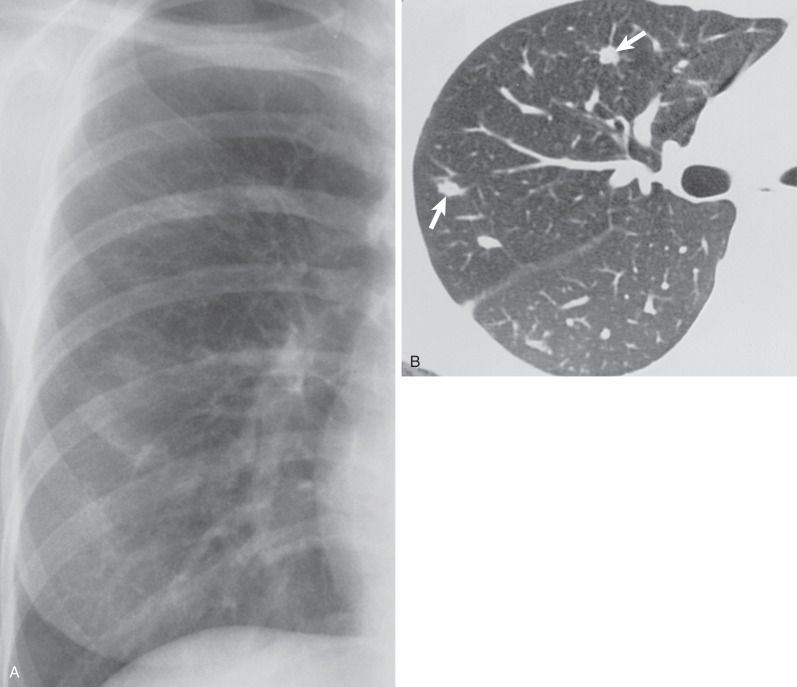Physical Address
304 North Cardinal St.
Dorchester Center, MA 02124
Pulmonary lymphoid hyperplasia, also known as follicular bronchiolitis or hyperplasia of bronchus-associated lymphoid tissue, is a benign condition characterized histologically by the presence of polyclonal lymphoid aggregates along the bifurcation of the bronchioles and along the pulmonary lymphatics and is mainly differentiated from lymphocytic interstitial pneumonia (LIP) by its typical distribution limited mainly to the airways. It is seen most commonly in association with connective tissue disease, particularly rheumatoid arthritis; immunodeficiency, particularly acquired immune deficiency syndrome (AIDS) (usually in children); hypersensitivity disorders; and as a nonspecific response in patients with airway infection, airway obstruction, or bronchiectasis.
Pulmonary lymphoid hyperplasia may occur in children and adults (age range, 1.5–77 years). The most common presenting symptoms are progressive shortness of breath and cough. Other manifestations include fever, recurrent pneumonia, and weight loss.
Pulmonary lymphoid hyperplasia is characterized histologically by the presence of discrete foci of hyperplastic lymphoid tissue, often associated with germinal centers, along the bronchovascular bundles ( Figs. 23.1 and 23.2 ). Hyperplastic lymphoid tissue also may be present within interlobular septa and visceral pleura.


The chest radiograph may be normal or show bilateral reticular or reticulonodular opacities ( Fig. 23.3 ).

The main high-resolution computed tomography (CT) findings consist of bilateral centrilobular and peribronchial nodules. Most nodules measure less than 3 mm in diameter. Nodules 3 to 12 mm in diameter are present in approximately 50% of patients, and patchy ground-glass opacities are present in approximately 75% of patients; small foci of consolidation may be seen in some patients (see Fig. 23.3 ). The nodules may be diffuse or involve mainly the lower lung zones. The nodules reflect the predominant histologic findings of peribronchiolar inflammation and coalescent germinal centers. Less common manifestations include mild interlobular septal thickening and bronchial dilation.
Centrilobular nodules are seen in a variety of diseases that affect predominantly the bronchioles or peribronchiolar interstitium. Common causes include hypersensitivity pneumonitis, respiratory bronchiolitis, and infectious bronchiolitis. Pulmonary lymphoid hyperplasia requires lung biopsy for definitive diagnosis.
Become a Clinical Tree membership for Full access and enjoy Unlimited articles
If you are a member. Log in here